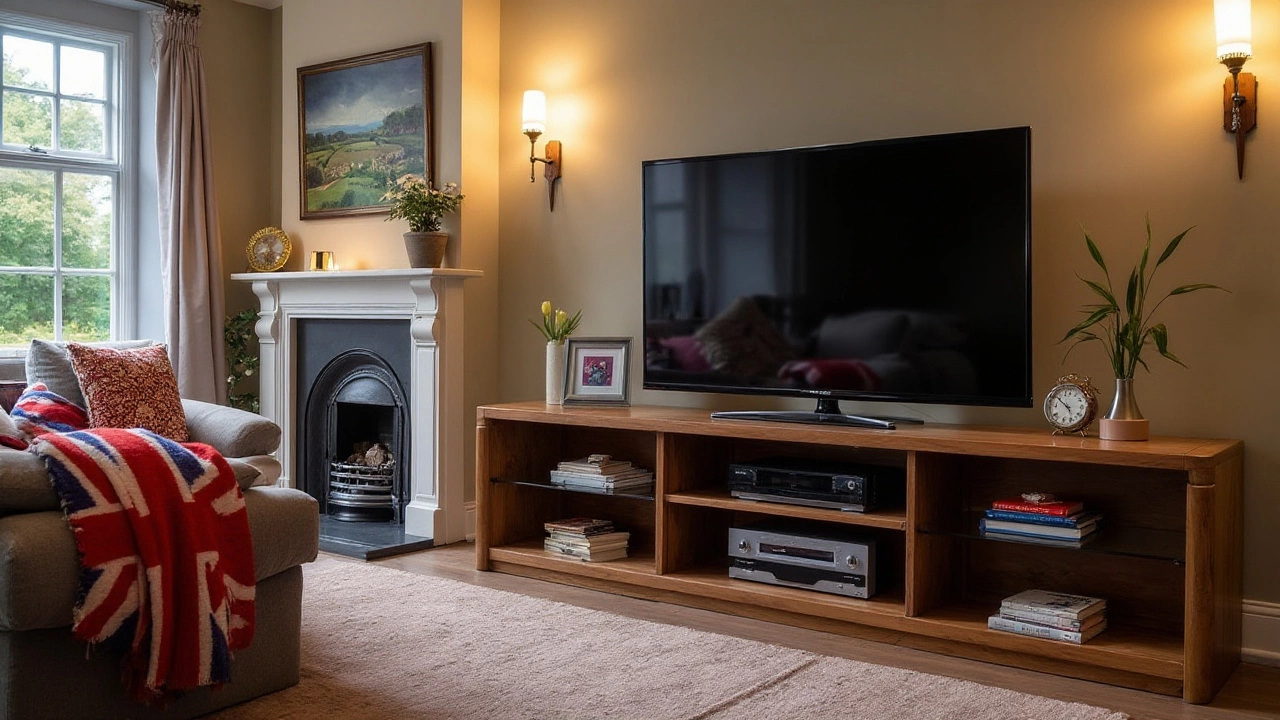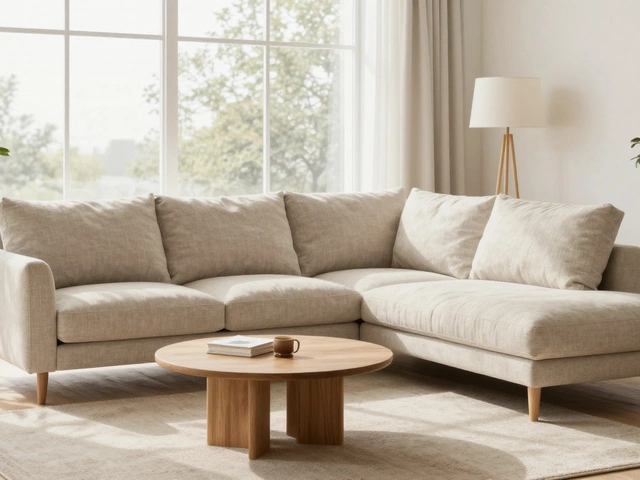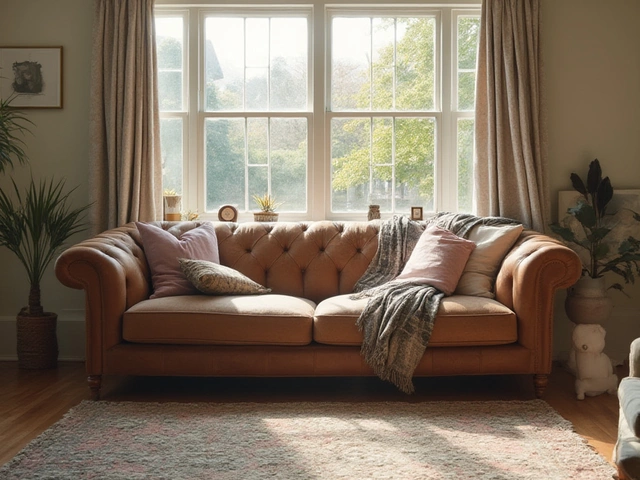So, you've just snagged a sleek new 65-inch TV, and now the quest for the perfect stand begins. What needs to be remembered is not just about landing any stand, but picking one that perfectly suits your needs and enhances your room's vibe.
Finding the right TV stand involves more than just matching its width to the screen size; it's a real balancing act of practicality and style. You want it wide enough to secure your TV, trendy enough to make a statement in your living room, and functional enough to hide away those pesky cords and gadgets.
In this guide, we'll tackle the nitty-gritty of what makes a TV stand truly great for a 65-inch TV. From optimal dimensions to material choices, and avoiding common pitfalls, get ready to elevate your home media experience without sacrificing an ounce of style.
- Understanding TV Size and Stand Width
- Ideal Stand Dimensions for a 65-Inch TV
- Material and Style Considerations
- Balancing Functionality and Aesthetics
- Practical Tips for TV Stand Selection
- Common Mistakes to Avoid
Understanding TV Size and Stand Width
Choosing the right TV stand for your 65-inch television starts with a clear understanding of its dimensions. When manufacturers refer to a '65-inch TV,' they are describing the diagonal measurement of the screen. It's a bit tricky because this measurement doesn't account for the width or the bezel that frames the screen. Typically, a 65-inch TV measures about 57 inches in width. This essential detail plays a crucial role when selecting a suitable stand, ensuring it can accommodate the TV comfortably without any risk of tipping over.
The width of your TV stand should not just meet but ideally exceed the width of your TV by at least 6 to 10 inches. This extra space isn’t just for show – it offers both stability and a visually pleasing proportion, avoiding a top-heavy look that can make the TV appear precarious. Additionally, these extra inches give room for decorative accents like picture frames, plants, or speakers, catering to both aesthetic and functional purposes.
As you consider options, remember that room layout and furniture arrangement are equally significant. How does the living room furniture align with the TV stand? Can you move around it comfortably, or does it impede traffic flow? The stand should complement your space without overpowering it, providing balance to your overall decor. Interior design experts often suggest ensuring there's at least two feet of space on either side of the TV stand to avoid a cramped appearance.
To quote the insightful interior designer Jonathan Adler, "Space must breathe. A cluttered environment can obstruct a space's potential to soothe and inspire."Such thoughtful advice highlights the importance of matching dimensions germane to both style and utility.
Let’s take a look at commonly favoured dimensions for a TV stand meant for a 65-inch TV. Often, stands around 70 to 80 inches in width provide the best balance between practicality and style, offering ample space for extras while maintaining focus on the TV itself. Height also matters; the midpoint of the TV screen should ideally align with eye level when you’re seated for comfortable viewing – often about 42 inches from the floor in most living spaces. Designing your entertainment setup with these metrics in mind not only enhances viewing comfort but also elevates the room's visual harmony.
Last but not least, consider compatibility with sound systems and additional electronic components. If you add speakers, game consoles, or media receivers, ensure the stand's width accommodates these alongside the TV without crowding. With the right attention to dimension details, your stand does more than hold – it complements, enhances, and unlocks the true potential of your cherished 65-inch screen. Don’t forget, a harmonious setup can transform viewing into an experience: seamless, enjoyable, and perfect for every movie night.
Ideal Stand Dimensions for a 65-Inch TV
Choosing the right dimensions for your TV stand is a vital step in setting up your entertainment area. When you own a 65-inch TV, it’s crucial to find a stand that is not just aesthetically pleasing but also functionally sound. The rule of thumb for matching your TV with the stand is to ensure the stand is at least as wide as the TV, if not slightly wider. Having a stand that spans at least 57 to 60 inches in width ensures that your TV sits comfortably, with slight overhangs that avoid any risk of tipping over.
Also, consider the height of your stand. The midpoint of your TV screen should ideally line up with your eye level when seated, which is about 42 inches from the floor. This consideration not only enhances viewing comfort but also helps reduce eye strain during long watch sessions. Factors such as base width, height, and viewer perspective are essential in creating a delightful viewing experience, blending seamlessly with your living room's harmony.
Material plays a role too. When you think about durability and style, opting for a sturdy material that complements your home's furnishing is helpful. Solid wood and metal offer longevity, whereas glass and finer materials bring modern elegance. If you’re an interior style enthusiast, theory supports integrating diverse textures and shades to create an inviting space.
"Choosing the right TV stand is not only about fitting your TV but enhancing your room's potential," says interior designer Justin Moore.
Additional considerations include the stand's functionality. Feature-rich stands with shelves or cupboards provide a great opportunity to manage cables, consoles, or additional peripherals. Adjustable shelves or mounts are particularly useful for custom setups. Many TV stands now incorporate built-in management systems, ideal for keeping your setup neat and organized, eradicating the notorious wire tangles lurking behind your entertainment setup.
Interestingly, current trends include the use of multifunctional units, where the TV stand can double as a bookshelf or display unit. This versatility not only saves space but also enhances the dynamic flow of a living room or home office setting. A correctly chosen stand impacts the home's ambiance and offers enough room for artistic touches or personal memorabilia. A thoughtfully selected stand propels the modern media room beyond basic TV watching, making it a central, interactive spot in the home.
In summary, picking the right stand dimensions becomes part of a larger narrative of harmonizing practical design with personal taste. It encapsulates the balance of design, comfort, and functionality, helping any room reach its full potential while catering to personal viewing habits and needs. Always examine what suits your personal living space, for in the end, it is not merely about standing the television but staging a captivating environment where family and friends gather and memories are built.
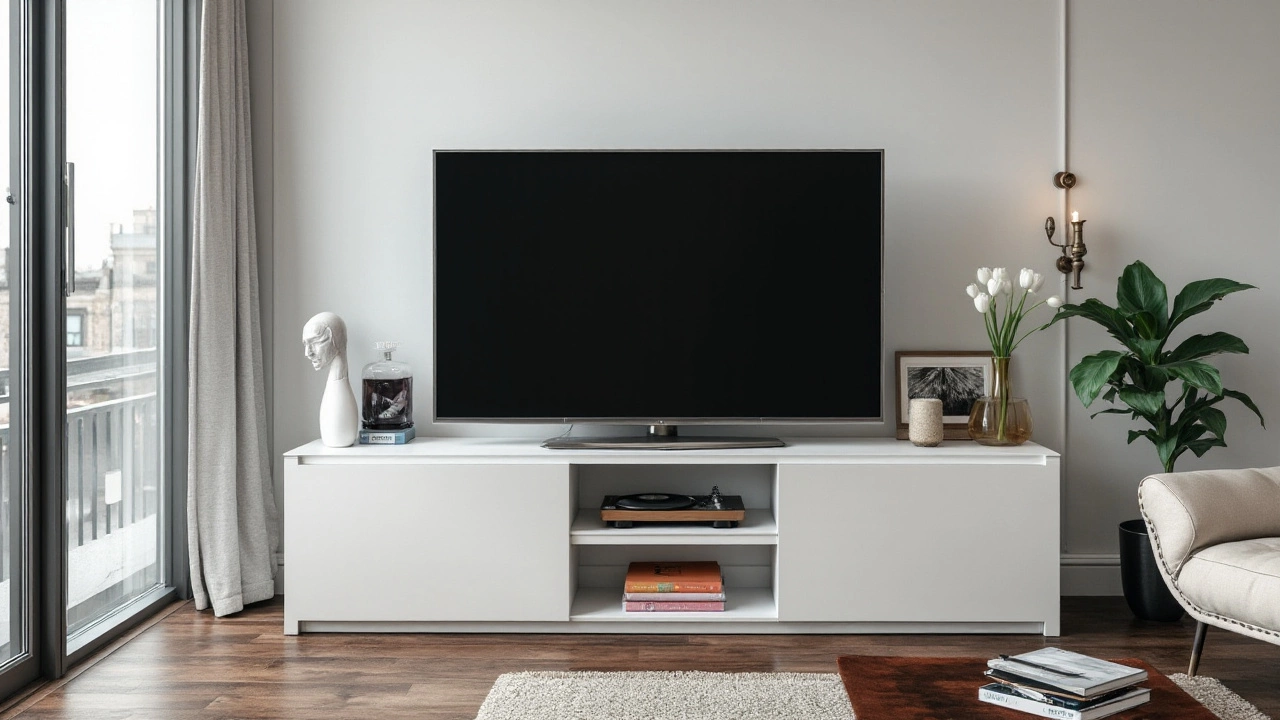
Material and Style Considerations
When it comes to picking out the ideal TV stand for your gleaming 65-inch TV, one can't ignore the importance of material and style in crafting an inviting living space. The right kind of material ensures not only durability but also plays a pivotal role in reinforcing your room's décor theme. Usually, TV stands come in a variety of materials, ranging from traditional wood to sleek glass and contemporary metal. Each material type has its distinct advantages, and your choice should reflect your functional needs and aesthetic vision. For instance, wooden stands radiate a warm and welcoming vibe and are incredibly versatile, fitting effortlessly into rustic or classic settings. On the other hand, glass and metal offer a chic, modern touch, ideal for tech-savvy environments where sleekness is key.
Wooden stands, especially those crafted from oak, walnut, or cherry, possess a timeless appeal. These materials not only bring robustness but also exude elegance that can form the centerpiece of a traditional room layout. If sustainability is a concern, reclaimed wood options are increasingly available, providing an eco-friendly choice without sacrificing style. However, be wary that wooden stands might require a bit more maintenance, particularly in protecting them from scratches or spills. As for metal and glass stands, they offer a minimalist allure that's perfect for modern interiors. What's more, their reflective surfaces can create a sense of space, making them suitable for smaller rooms. But, it's crucial that these materials are used thoughtfully as they can easily show fingerprints and dust.
Another factor to consider is the style that syncs with your personal taste and complements your home's interior design. Whether you lean towards mid-century modern, industrial, farmhouse, or minimalist, there's a plethora of options out there. A popular choice in contemporary homes is the floating design, where the TV stand mounts directly to the wall, offering a clean and uncluttered look. It's noteworthy to also consider the color and finish of the TV stand. A darker stain can lend an air of sophistication and blend seamlessly with darker furniture, whereas a lighter finish can brighten your space and harmonize with lighter décor elements.
"A well-chosen piece of furniture transforms not just the room but your entire perception of the space," says design expert Emily Henderson. Her advice resonates deeply when choosing a stand that aligns with your decor vision.Beyond aesthetics, functionality should not be compromised. Many styles offer added benefits like integrated storage, which could be invaluable for hiding unsightly cables and storing media gadgets or gaming consoles. It's crucial to inspect potential TV stands for cable management systems which help keep your entertainment area tidy. Shelves and cabinets should have enough space to fit your components comfortably, without overcrowding.
Another interesting aspect to ponder is the potential resale value of your furnishing choices. High-quality materials paired with classic styles are more likely to retain value, should you decide to revamp your living room in the future. By strategically selecting your materials and style, you’re investing not only in the present look and feel of your home but also in the potential for future flexibility. Considering these measures assures that your TV stand serves as both a functional and stylish element, enhancing the experience of watching your favorite shows or movies on a splendid 65-inch screen.
Balancing Functionality and Aesthetics
When it comes to selecting the perfect TV stand for your gleaming new 65-inch TV, it's crucial to consider a harmonious blend of functionality and aesthetics. The television might be the focal point of your living space, but the stand it's perched on plays an integral role in shaping the room's ambiance. A well-chosen stand can enhance the viewing experience, offering both a practical spot to house your entertainment accessories and an elegant fixture to complement your home decor.
Start by evaluating the stand's storage capabilities. A functional TV stand should offer ample space not just for holding the TV but for tucking away gaming consoles, cable boxes, and those unsightly tangle of cords. Some designs come equipped with nifty cable management systems that keep those tangles out of sight, ensuring a neat and tidy look. An ideal setup might include adjustable shelves or closed cabinets, where you can privately stow away any clutter. But it's not just about hiding things—some stands offer glass shelves or open displays which can be a wonderful way to showcase decorative items, framed photos, or that fabulous antique clock you inherited.
While we're on the subject of aesthetics, consider the stand's material and design elements. Wood stands often lend warmth and traditional charm, while metal or glass can give off a sleek, modern feel, perfect for contemporary spaces. The key here is making sure the stand's design aligns with the style cues already present in the room. You wouldn’t want an ultra-modern TV stand clashing with your classic Victorian decor, would you? TV stand material not only affects look but longevity too. Solid wood can outlast many trends, whereas combinations like metal and glass might be lighter and easier to move.
Color Coordination and Style
Colors play a silent yet powerful role in unifying the decor theme. A black or dark-toned stand often acts as a neutral anchor, seamlessly blending with most decors. Yet, white or lighter finishes can add a fresh, airy quality to the room, especially in smaller spaces where you want to maximize light reflection. Consider contrasting the TV stand with other furniture for a bold, stylish impact, or maintain a cohesive palette by matching tones. Remember, your TV stand isn’t just furniture—it’s a part of your living room’s identity. As the designer and architect Charles Eames said,
“The details are not the details; they make the design.”Each element on your TV stand, from knobs to finishes, is an opportunity to personalize your space.
Moreover, don't shy away from innovative designs like swivel or wall-mounted stands if space is at a premium. Swivel stands offer flexibility, allowing you to adjust the viewing angle across different parts of the room. These are particularly handy in sunny rooms where screen glare might be an issue. On the other hand, wall-mounted solutions can free up floor space, perfect for cozy apartments or when you want a minimalist look.
In the quest for the right balance between functionality and aesthetics, it's imperative to prioritize what's important to you and your lifestyle—perhaps it's extra storage, a particular color scheme, or the ability to incorporate the stand seamlessly into your home's existing decor. The perfect stand doesn't just serve a practical purpose but also tells a story of style, space, and personal taste. As you explore options, think of your 65-inch TV as part of a gallery that makes your living room feel complete.
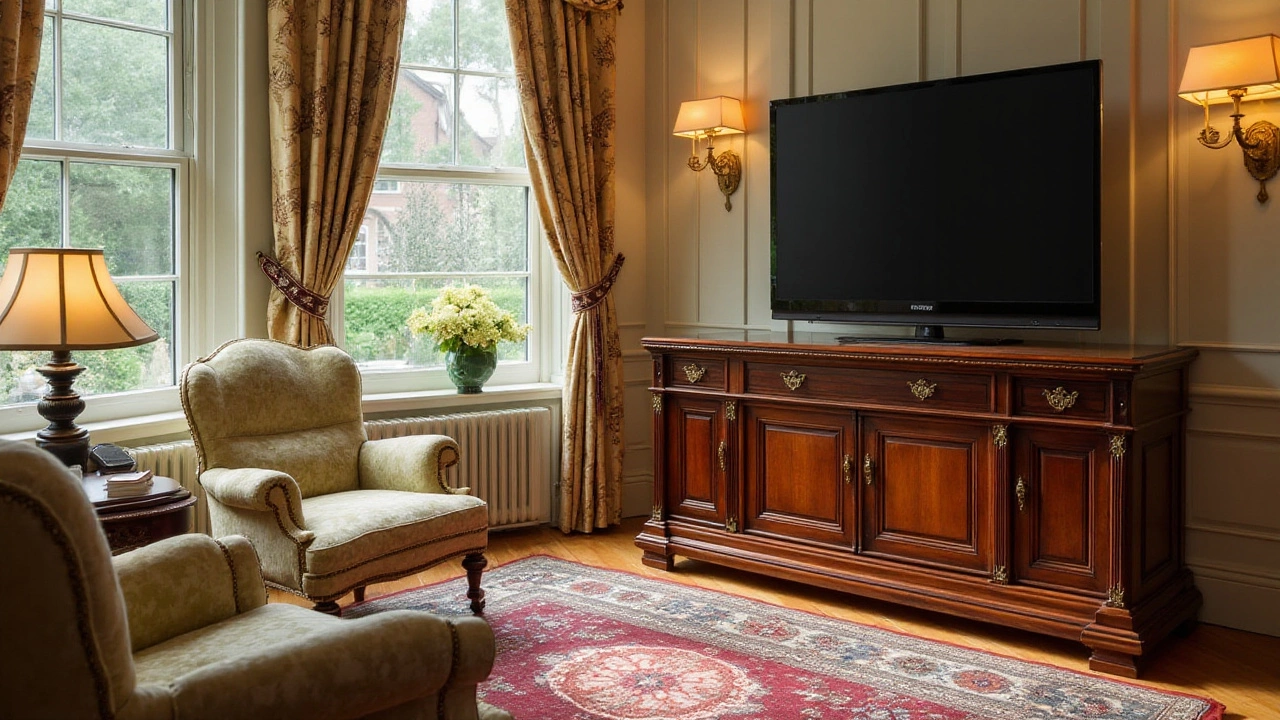
Practical Tips for TV Stand Selection
Finding the right TV stand for your 65-inch television is much like choosing the perfect companion furniture piece that will not only carry the weight of your television but also complement the aesthetic of your room. It can be akin to selecting art; you aim for perfection in both form and function. What makes a TV stand worthy of this role? First and foremost, it must be the right size. The stand should ideally be slightly longer than the TV itself, giving the television secure footing and preventing it from accidental topples. This means for a 65-inch TV, you would benefit from a stand that is at least 57 inches wide. Naturally, the extra width can also double up as a space for decor items that could add a touch of personality or even function to the visual setting.
It's not just about the dimensions, though. The material plays a pivotal role in both the durability and the style of your stand. Wooden stands offer a classic, warm appearance and can last decades if maintained properly. On the other hand, glass and metal options provide a sleek, modern look but may require more care to keep clean and damage-free. For a balanced approach, consider stands that combine materials, such as metal legs with wooden or glass shelves, ensuring both robust support and contemporary aesthetics.
A major tip often overlooked is cable management. Nothing disrupts the magic of a beautifully styled room like a jumble of wires spiraling down the side of your setup. Many TV stands these days come with designated holes or channels at the back designed to hide cables for a clean, professional appearance. Make sure to consider this feature when browsing options. The fewer the visible wires, the neater and more organized your living room will look, which can be quite soothing after a long day.
"The best TV stands are those that serve both style and purpose, offering functionality without compromising on design," says famed interior designer, Jonathan Adler.
Then there's storage—a crucial feature if you have any media players, sound systems, or collections of DVDs and games to house. Look for stands with adjustable shelves or drawers to accommodate equipment of different sizes. This not only keeps devices safe but maintains the minimalist charm, ensuring your living room remains uncluttered.
Finally, think about the height of the stand. This will affect your viewing angle, and comfort matters just as much as appearance. The midpoint of your TV should ideally be at eye level when seated. This ensures a natural posture without strain. An adjustable height option can be perfect for households with differing seating arrangements. In essence, a stand should not make you crane your neck, nor should it force you to slouch.
Let’s compare a few typical materials and their qualities in a simple table to help you visualize the differences:
| Material | Durability | Style |
|---|---|---|
| Wood | High | Classic, warm |
| Metal | Medium | Modern, sleek |
| Glass | Medium | Contemporary, elegant |
As you sift through these practical tips, remember your home is your canvas. Each piece you select is part of a broader picture. Make sure that picture reflects not only your tastes but also your lifestyle needs, ensuring that your living space remains comfortable, efficient, and wholly yours.
Common Mistakes to Avoid
When it comes to picking the perfect TV stand for your 65-inch TV, it’s quite common to fall prey to certain pitfalls that could mar the experience. The first faux pas to steer clear of is misjudging the stand's width. Some believe any stand slightly wider than the television is a decent fit, but it's essential to remember that your TV’s footprint, the space its base covers, is often not as wide as the screen. A good rule of thumb is to have a stand that is at least a few inches wider than your TV screen. This ensures stability, reducing the likelihood of accidental topples.
Another frequent blunder is overlooking the stand's height. Sitting too high or too low can lead to uncomfortable viewing angles and put unnecessary strain on your neck and eyes. Ideally, the center of the TV screen should be at eye level when seated. Many people tend to underestimate this aspect, and it becomes especially noticeable in longer viewing sessions. Consider how your seating arrangement impacts the ideal height.
Material choice can also be a stumbling block. While particleboard models are cheaper, they may lack the sturdiness of hardwood or metal options. Safety is compromised with inferior materials, as they tend to wobble under the weight of large televisions. If you’re tempted by a bargain, remember, like in many things, you get what you pay for. In the long run, investing in quality materials often saves money when replacements become unnecessary. A thought echoed by many furniture experts.
"The key is to balance budget with long-term benefits," notes interior designer Anna Grayson, "Cheap furniture may solve today's problem but can become tomorrow’s regret."
Ignoring cable management is yet another slip-up to avoid. As entertainment systems grow more complex, they demand an efficient cable management solution to maintain a tidy appearance. A TV stand with built-in features like cut-outs and hidden passages for wires can significantly enhance both functionality and aesthetics. It not only reduces the clutter but also minimizes trip hazards and enhances the overall look of your living space.
Finally, many overlook weight capacity, assuming all stands hold modern TVs. Each stand has a specific weight rating that users should strictly adhere to. Overloading a stand risks not just the equipment but also personal safety. Ensure that the stand is rated for the weight of the TV and any additional devices you plan to store, such as gaming consoles or sound systems.
In a nutshell, avoiding these common mistakes ensures a much more enjoyable and stress-free experience with your TV stand. Careful planning is often the difference between a seamless integration into your living room and a series of avoidable frustrations.
